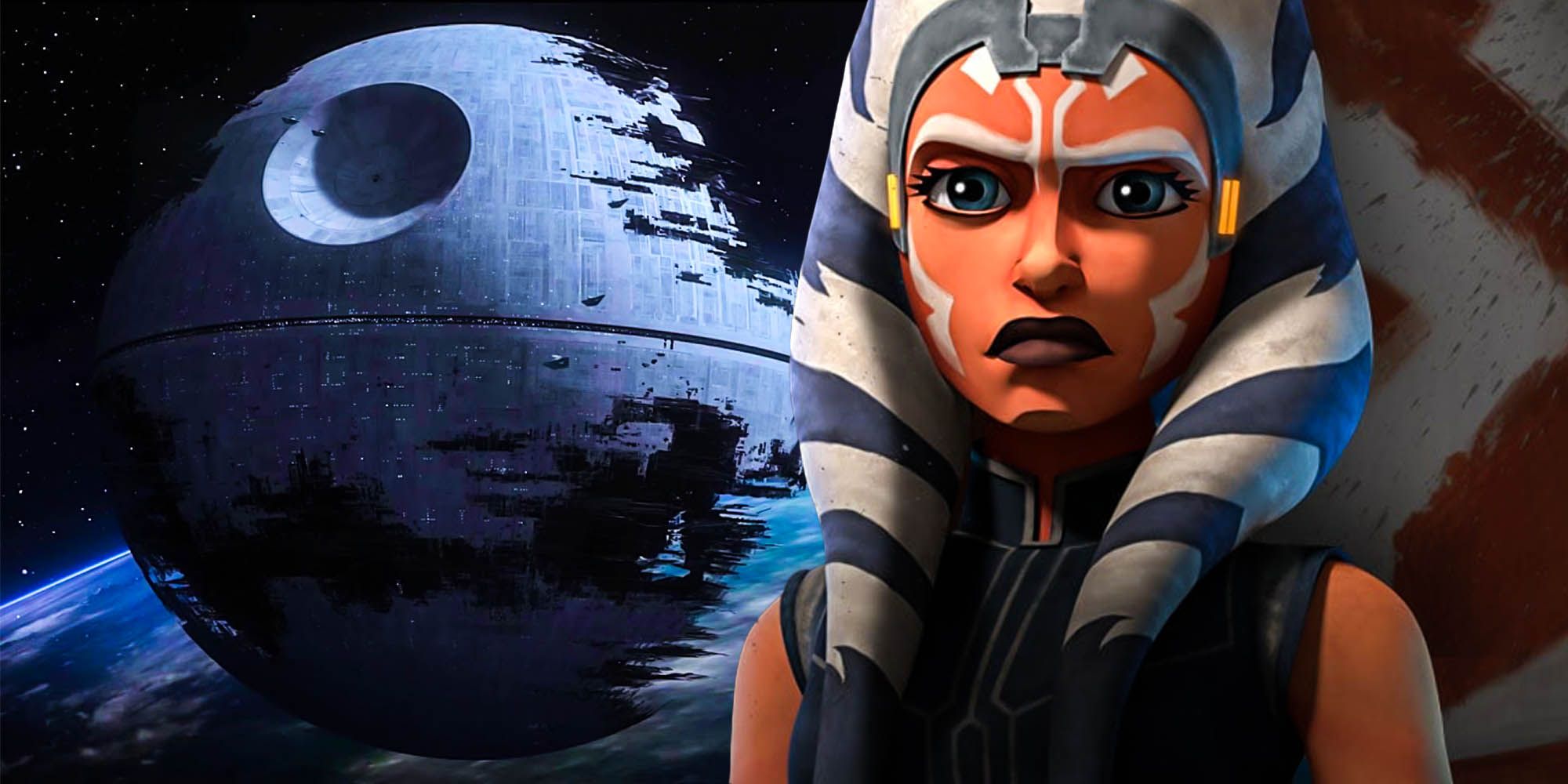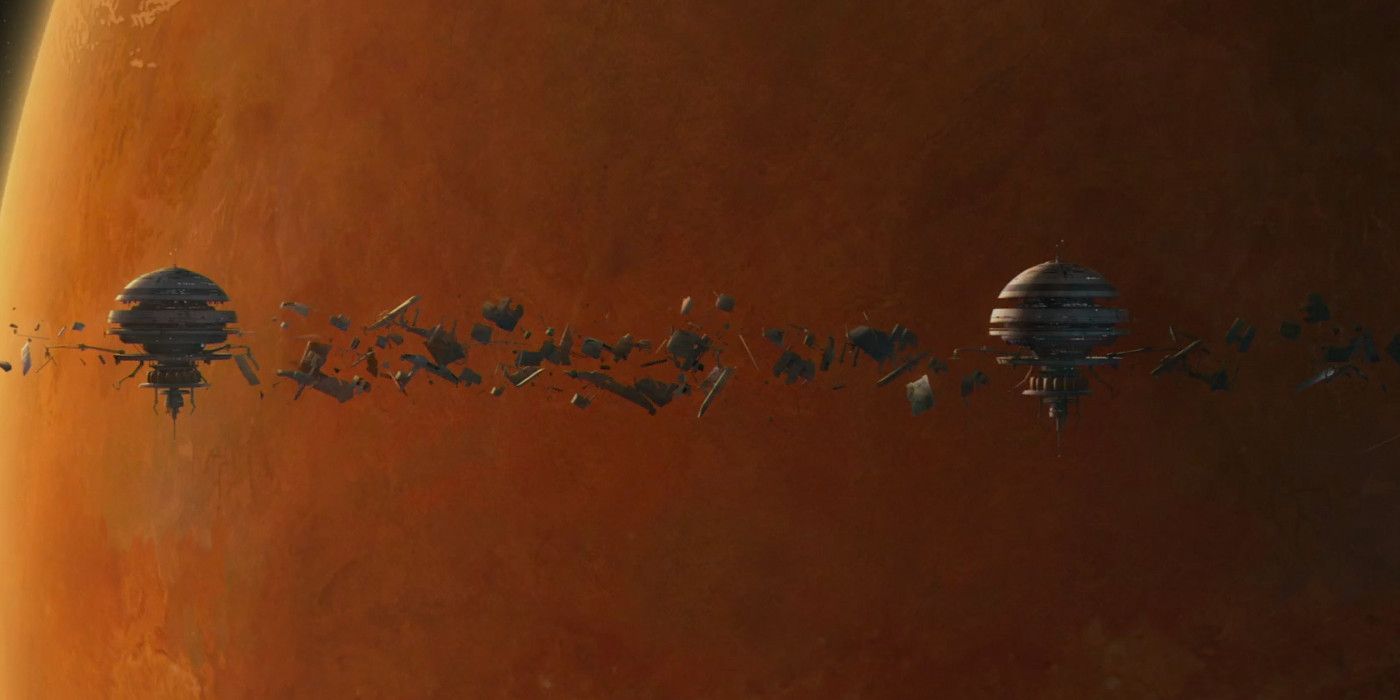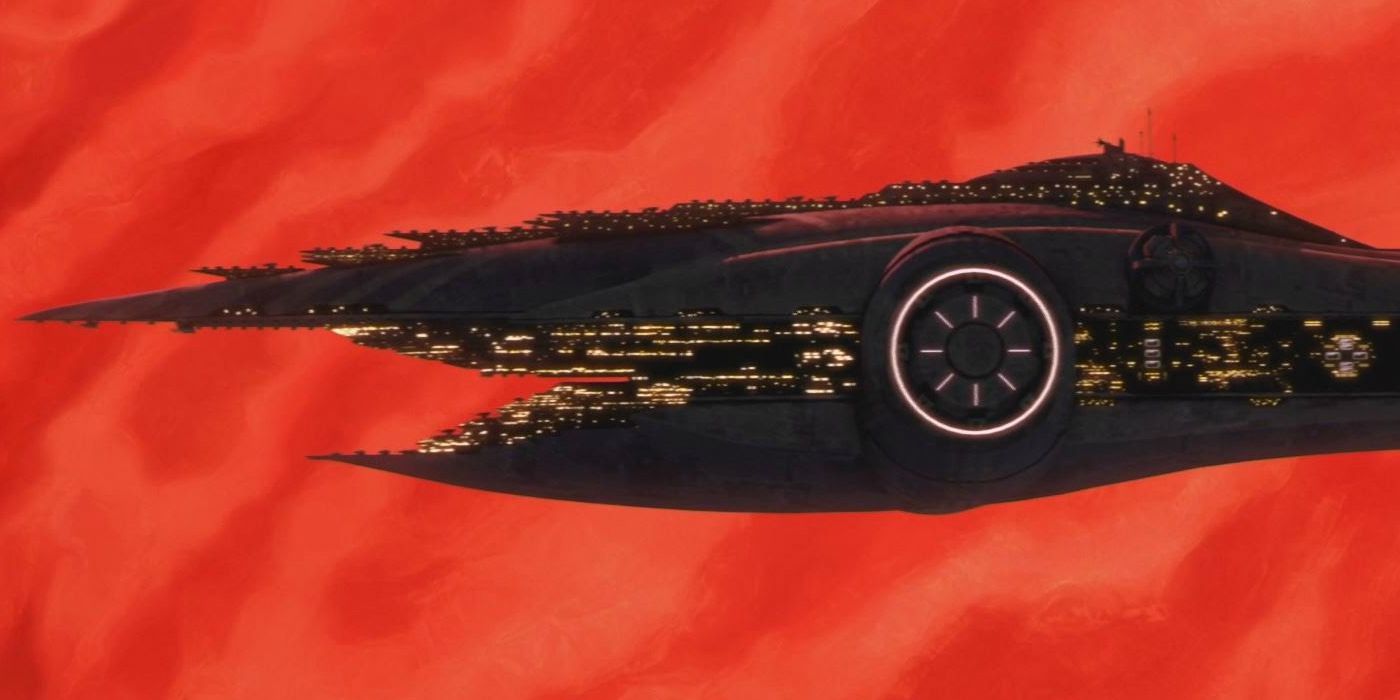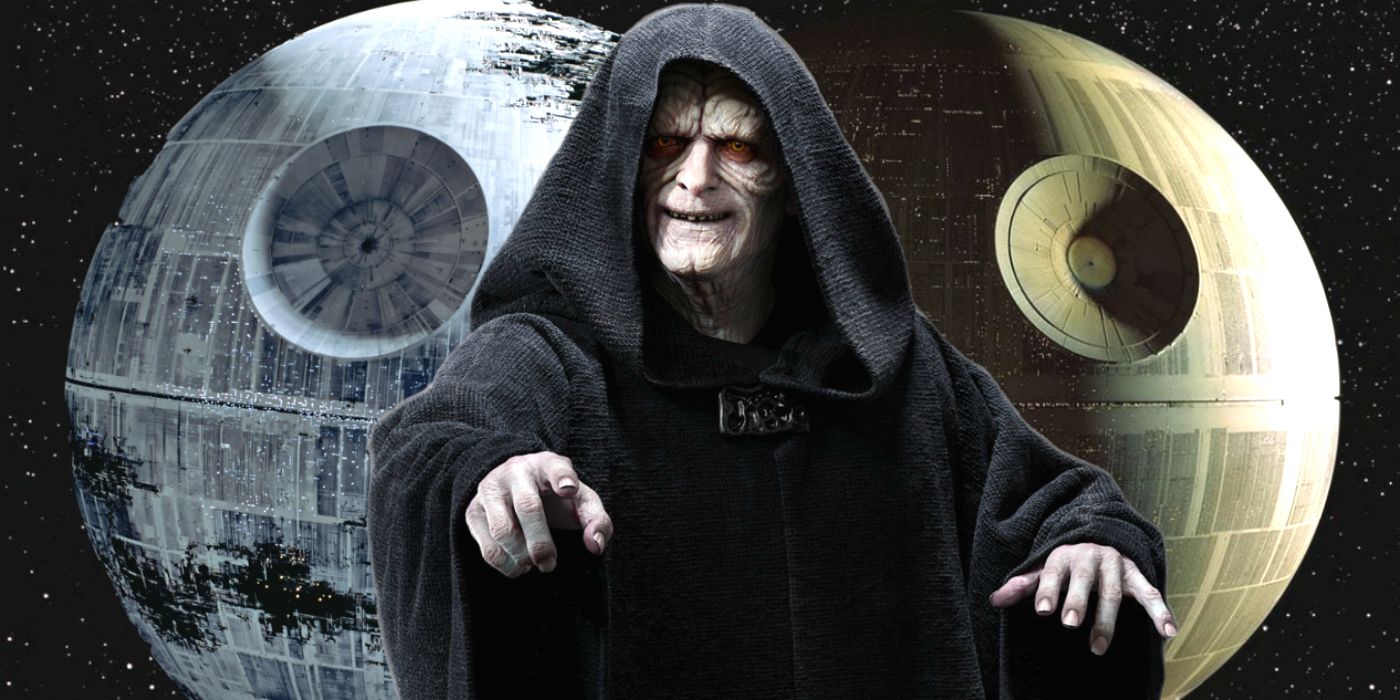
While the timeline of the Death Star II's construction may not seem as curious on its face, with many assuming the Empire simply built it as a replacement for the first Death Star, it's important to note the origin of the first Death Star also wasn't much of a mystery until it was first teased as a hologram in Star Wars: Attack of the Clones and then shown under construction in Star Wars: Revenge of the Sith, leaving massive lingering questions about the Imperial superweapon and why it wasn't operational until the events of Star Wars: A New Hope, nearly two decades later.
As the Star Wars canon is expanded and filled in, the events surrounding Return of the Jedi have been largely avoided, unlike A New Hope and Empire Strikes Back, which have been thoroughly expanded by animation like Star Wars Rebels, books like the Thrawn Trilogy or Battlefront: Twilight Company, comics like the mainline Star Wars comics, Darth Vader comics, Doctor Aphra comics, and more. Despite all of this, the timeline between The Empire Strikes Back and Return of the Jedi was left mostly untouched until more recently, particularly with Star Wars: War of the Bounty Hunters, but still, the origin of the second Death Star hasn't been overtly teased, at least not as much as it was in the stories filling in the time before A New Hope, which only gets more curious as time goes on, meaning it's possible there's a much bigger story waiting to be told.

The first Death Star is ultimately known as an Imperial superweapon, but its origins are much more complicated than that. The Empire may have completed the weapon's construction, particularly the superlaser, but the battle station's creation was initiated by the Genosians during the Clone Wars before the Galactic Republic seized the station and its plans and had then admiral Tarkin and Lieutenant Commander Orsen Krennic oversee the Genosians as they continued construction of the superweapon long before the Republic was reborn as the Galactic Empire, although the project was kept as a deep secret and most of the Republic, and especially the Jedi, weren't even aware of its existence.
In another twist, it turns out the plans weren't entirely the original designs of the Genosians either, as revealed in the prequel tie-in book, Catalyst: A Rogue One Novel Geonosian Archduke Poggle the Lesser revealed to Republic intelligence that the plans for the Death Star were originally presented to the Geonosians by the Sith Lord Darth Tyranus, AKA Count Dooku. As such, it should be noted that not only does the Death Star concept somewhat resemble other ancient Sith superweapons, such as seen on the planet Malachor in Star Wars Rebels and Starkiller Base in Star Wars: The Force Awakens, but also Dooku was the one who orchestrated the creation of the Clone Army for the Republic, all while manipulating the organization and rebellion of the Confederacy of Independent Systems on behalf of his Sith Master, Darth Sidious, who was secretly at the head of both the Separatists and the Galactic Republic for the entirety of The Clone Wars, meaning he utilized both sides of the war to complete portions of the Death Star before it was finally operational under the Galactic Empire, which he ruled as Emperor Palpatine.
After the Empire moved the construction of the first Death Star away from Geonosis to Scarif (where it's seen in Rogue One: A Star Wars Story), the planet Geonosis was sterilized, killing almost all the Geonosians as a cover-up to hide the existence of the Death Star.

Not only was the Death Star unknowingly designed and constructed by both sides of the Clone Wars, but one of the biggest reasons for the Republic rushing its construction in secret was speculation of the existence of another superweapon under construction by Count Dooku, creating a sort of superweapon arms race the Republic didn't want to lose. As written in Catalyst: A Rogue One Novel "It continued to puzzle Krennic that Count Dooku hadn't attempted to launch a peremptory strike on the construction site. How had the fact that the battle station schematics were in Republic hands remained a secret? The thinking was that Dooku was too busy working on his own version to worry about what the Republic was doing. In that sense, the project was less about achieving parity than winning the race and being the first to deploy the weapon."
There's no overt confirmation of this rumored separatist superweapon's existence, but there's plenty of ancillary story details presented in Star Wars canon to add weight to the idea. A couple of episodes in the first season of Star Wars: The Clone Wars, "Rising Malevolence" and "Shadow of Malevolence," included a separatist Subjugator-class heavy cruiser commanded by General Grievous with a new secret weapon, which, while it behaved a bit differently from the Death Star superlaser, included a few design elements that could certainly be seen as a precursor to the Imperial space station, particularly the trenches along the ship and the weapon's channel (there was even an homage to the Death Star ignition sequence when it fired). The weapon itself wasn't likely a Death Star prototype, but the similar design elements suggest the same guiding hand in the design.
Additionally, Star Wars: The Clone Wars season 7, features a Republic attack on the Anaxes assembly complex, a separatist shipyard held by the Techno Union, and there's a number of other major design similarities to the second Death Star. The domed structure certainly resembles half of the spherical space station design of both versions of the Death Star, but the plant's fusion reactor core is incredibly similar to the reactor core seen at the center of the second Death Star, destroyed by Wedge Antilles and Lando Calrissian during the Battle of Endor in Return of the Jedi. We never see the reactor core of the first Death Star, since it's destroyed via a chain reaction from the thermal exhaust port, so it's entirely possible this is simply a design language shared by both battle stations (or by all reactor cores in general). However, it's fair to say if the Separatists were constructing their own Death Star in secret, Wat Tambor's Techno Union certainly would have been involved, so the shared reactor designs shouldn't be entirely overlooked. It should also be noted that after the Clone Wars, the planet Anaxes was destroyed in a mysterious accident, which could be a coverup of its own, like Geonosis.
Finally, there's another odd bit of Star Wars lore from some unfinished Star Wars: The Clone Wars episodes that didn't get completed for Season 7 unlike the Bad Batch arc, yet the animatics were released and are treated as canon by the Lucasfilm Story Group. The arc features Anakin and Obi-Wan investigating the death of a Jedi on the planet Utapau, beginning in Pau City, the same place where Obi-Wan ultimately defeats General Grievous in Star Wars: Revenge of the Sith. Through their investigation, they discover a massive kyber crystal, bigger than a speeder bike, just like one seen in Star Wars Rebels that was presumably intended for the Death Star project. Anakin and Obi-Wan ultimately destroy the crystal, which Yoda later approves of, as the ancient Sith were known to use giant Kyber crystals to power their superweapons. We already know the first Death Star used a giant kyber crystal, but the Death Star had already been seized from the Separatists at this point in the timeline, begging the question of what the separatists needed it for unless they were still working to construct their own superweapon for Darth Sidious in the late stages of the Clone Wars.

As already stated, Palpatine was clearly playing both sides of the war as a massive puppet master for his own ends, and the construction of the Death Star is one of the most understated but clear examples of his machinations at work. Palpatine utilized the engineering prowess and drone labor of the Geonosians to initiate construction, only to have the Republic continue the project once the Geonosians were defeated, keeping it a secret from the highest levels of both sides in the process, ultimately having Wilhuff Tarkin and Orsen Krennic take command of the project, with Galen Erso coming in to harness the power of the kyber crystal to perfect the superlaser design and secretly build in the fatal thermal exhaust port flaw that caused the Death Star's destruction).
Palpatine always had backup plans. Circumstances may not have always turned out the way he anticipated, but they always ultimately benefitted him. This is clear from his various apprentices. He groomed Darth Maul to be his enforcer, and as is revealed in The Clone Wars, Maul was trained as more than a fierce brawler, but also as a politician and shrewd manipulator and commander of his own forces. When he lost Maul, he replaced him with Count Dooku, who continued the execution of Palpatine's plan by orchestrating the creation of the clone army and instigating the Confederate split and civil war that became the Clone Wars. Of course, once Anakin was on his radar, the boy was always destined to become his apprentice, which he did not long after killing Count Dooku, stepping into the same role once intended for Maul as Palpatine's right hand after he became Emperor.
To accomplish all of this, Palpatine was always playing both sides of the war, as seen in Star Wars: The Phantom Menace where he orchestrates the Trade Federation's blockade of his home planet, Naboo, using the political crisis to climb in rank from Senator for Naboo to Chancellor of the Republic. Later, he uses the threat of war to convince Jar Jar Binks to propose the Emergency Powers act, allowing him to create the Republic army without senate approval, and he used additional crises throughout the war to further expand his powers to stay in office past the end of his term, take more control over military operations, take control of the galactic banks (previously controlled independently by the banking clan), place a representative (Anakin) on the Jedi council, and he ultimately used the Jedi's discovery of his schemes and attempt to stop him as justification for reforming the Republic as the first Galactic Empire, naming himself Emperor. It didn't stop there, as several decades later, after Rogue One: A Star Wars Story, during Star Wars: A New Hope, he uses the battle of Scarif as justification to abolish the senate entirely.
Finally, Palpatine was also at the center of the speculation the Separatists were building their own superweapon, as revealed in the canonical Star Wars: Dawn of the Rebellion sourcebook for the Fantasy Flight RPG, it specifies Poggle the Lesser gave the Death Star plans to other members of the Confederacy before his capture and Palpatine himself spurred on rumors the CIS was working on their own battle station in order to push the Republic to give their own project more funding. Surely the threat of a Separatist superweapon on its own was useful, but given Palpatine's penchant for building redundancies into his plan (and the fact that the Separatists were still seeking giant kyber crystals in the late days of the Clone Wars), the odds are fairly strong that there was an unfinished separatist battle station hidden somewhere in the galaxy at the end of the war, and Darth Sidious would have known exactly where it was.

The notion that the Confederacy of Independent Systems was behind the initial construction of the second Death Star answers a lot of mysteries in Star Wars canon far beyond the simple origin of the space station itself. The construction of the first Death Star dominated Star Wars stories surrounding and leading up to the events of Star Wars: A New Hope, yet there isn't anything about the second Death Star revealed in canon beyond the limited information in the briefing for the Battle of Endor in Star Wars: Return of the Jedi. The Thrawn novels reveal Grand Admiral Thrawn was able to sniff out the project despite its secrecy based on inconsistencies in Imperial records, but even Saw Gerrera and the Ghost Crew were aware of some sort of massive Imperial construction project, and while they weren't aware of the specifics, it was enough to cause concern for the nascent Rebellion at the time.
If the Empire began construction on the Death Star II in reaction to the loss of the first Death Star, it would have triggered even more red flags, as that would mean it was built in just over 20% of the time it took to build the first Death Star (although the Death Star II construction had not been totally completed yet), and was significantly larger, at 200-kilometers in diameter compared to 140 kilometers for the original. If resource drain and supply chain inconsistencies is what alerted some people to the first Death Star's construction, there's no way the Empire could have hidden the creation of the second Death Star if it happened that fast.
It's possible the Empire always planned to have multiple stations, so it was under construction the whole time, but that's certainly something Galen Erso would have been aware of, given his level of involvement in Project Stardust, and again, the resource drain would have created major red flags for Thrawn and Rebel spies. Even so, it still wouldn't invalidate the theory that construction began under the supervision of the Confederacy of Independent Systems, just like the original Death Star. More than likely, Palpatine stoked a secret superweapons arms race between the CIS and the Republic, using his role as Chancellor to scare the Republic into funding their project with threats of a CIS station and used the threat of a Republic weapon to scare the Separatists into completing theirs as Darth Sidious.
This also explains what happened to the other Separatist superweapons confirmed to be in development outside of The Malevolence and the first Death Star. Despite confirmation of other weapons in development, none have surfaced, unless the second Death Star is the weapon being referenced.
If true, this theory means after the destruction of the original Death Star, Emperor Palpatine revealed the partially complete second Death Star to his trusted agents and had the Empire resume its creation. While that still wasn't enough time to complete the entire superstructure, the technology necessary to complete the superlaser was already perfected for the first Death Star, explaining why that portion of the project is operational by the time of the Battle of Endor, far faster than the original.
It's still odd Star Wars canon hasn't begun dropping more hints about its creation in stories set during this period, however, given the popularity of Mon Mothma's "Many Bothans died to bring us this information" quote, and the popularity of Rogue One: A Star Wars Story, it wouldn't be surprising if Lucasfilm is keeping this area of Star Wars lore as untouched as possible to not interfere with a potential movie or streaming series serving as a sort of Rogue Two, telling the story of the Bothans and other Rebels involved in getting information about the superweapon. The portion of the timeline between Return of the Jedi and The Force Awakens had a similar no-fly-zone mandate for a long time until the creation of The Mandalorian, and now multiple additional shows are set to occupy that period, such as Star Wars: Ahsoka, The Book of Boba Fett, and more, including an as-yet-untitled major crossover event between all those stories. The timeline between The Empire Strikes Back and Return of the Jedi isn't nearly as spacious, but it used to be occupied by the fan-favorite (but now non-canon) Shadows of the Empire, so it would make sense to replace it with something more substantial than books, comics, or animation.
No comments:
Post a Comment